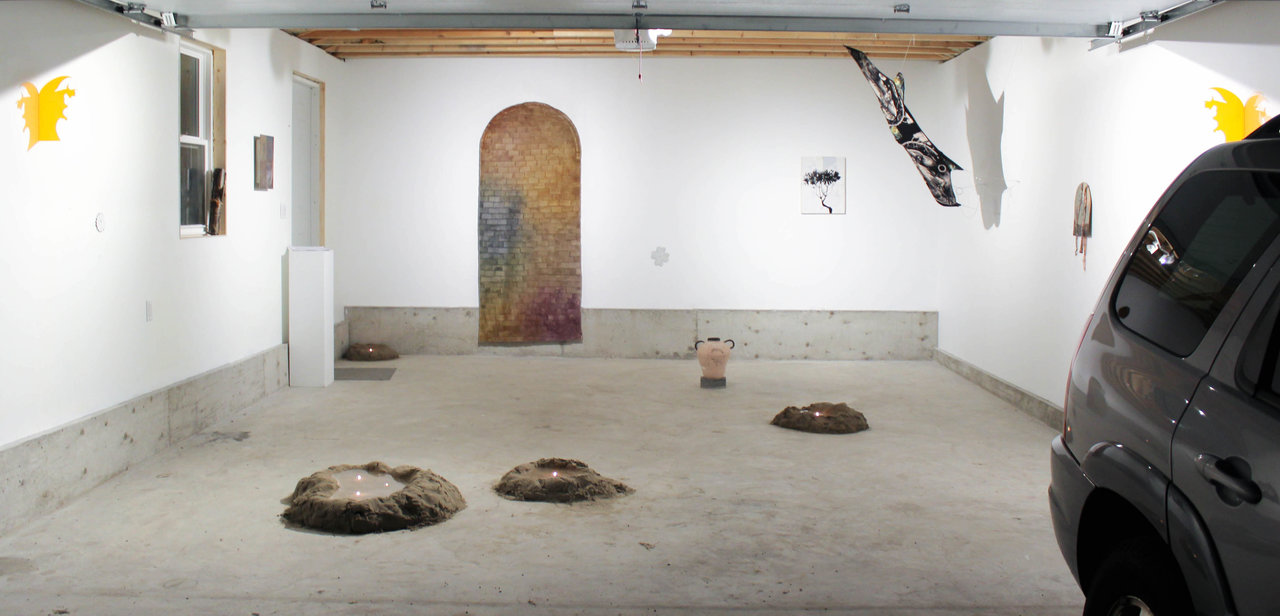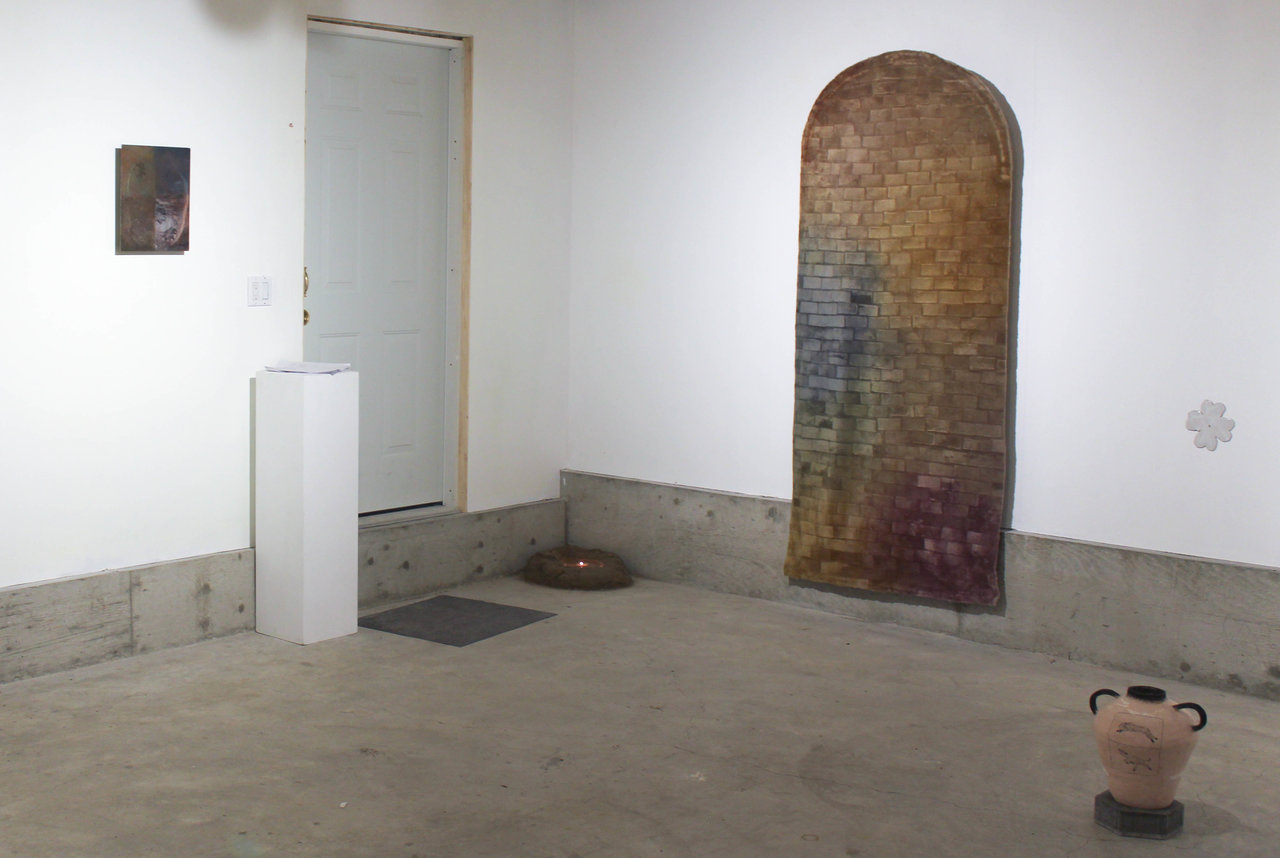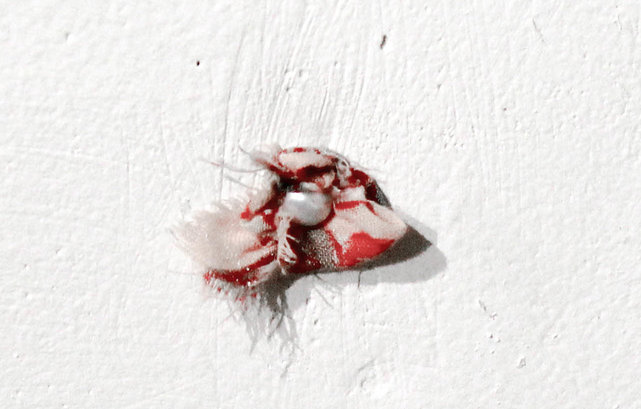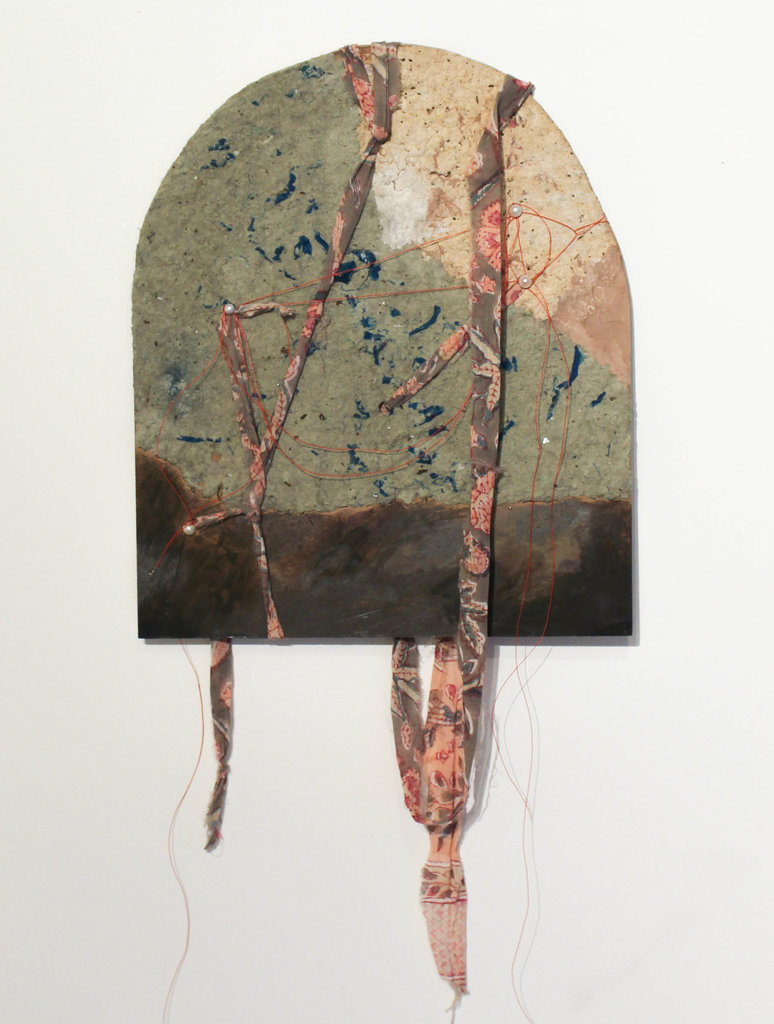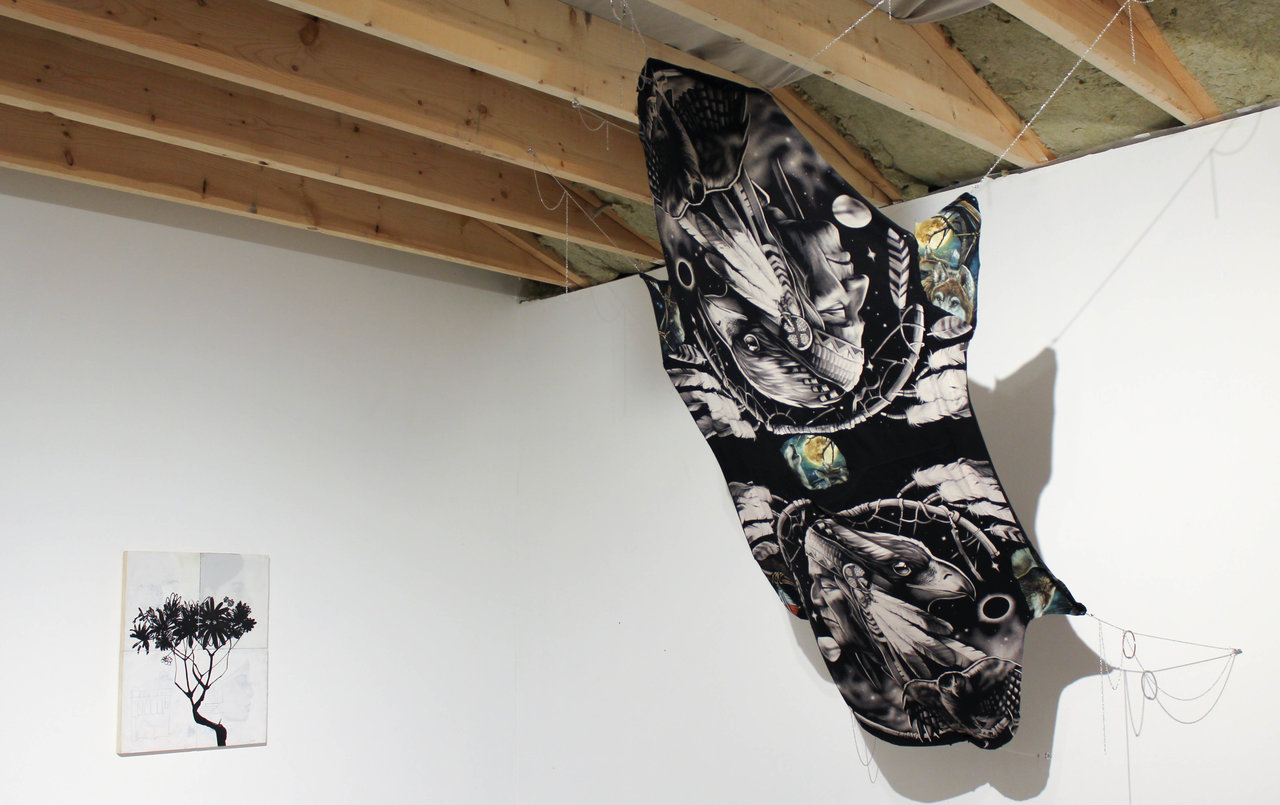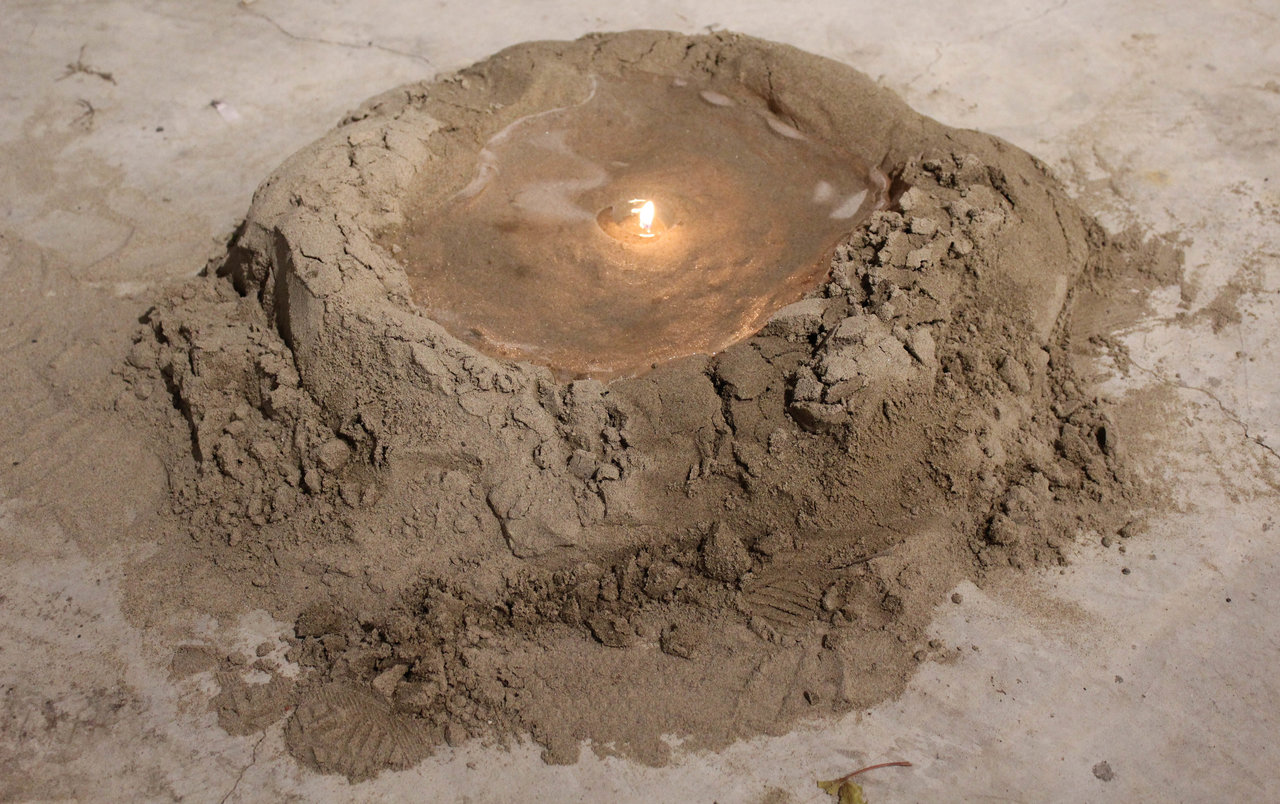Consider this video clip, a CTV News report from March 16, 2015: Nick Lambrinos, middle-aged, wears a black leather jacket, oatmeal turtleneck, and dark tinted glasses. He’s talking with a police officer, gesturing at a property that’s just been demolished by a house fire. “No rooming house, my friend,” Lambrinos says to a reporter now. “That’s the neighbors’ jealousy. And I was nice. Whatever they want, I give them.” He rambles on, his voice a note sterner: “It’s jealousy. That’s all they have, and that’s why the whole city—from people talking, jealous of one another.” The clip abruptly cuts off. A reporter pontificates about the cause of fire. The property has numerous illegal additions, included a detached garage. This house has been operating as an illegal rooming house, he informs us. At least three tenants have been rendered homeless. We’re told they shouldn’t have lived there in the first place.
November 23, 2019: I’m at the opening reception for New Strata, the first exhibition at HEARTH, a new artist-run space here in this garage on Lambrinos’ old property. “Works within the opening exhibition embrace fire’s generative potential as much as its destructive qualities,” the exhibition package explains. A hearth, the base of a fireplace, is supposed to symbolize community. A hearth is the part of the home around which people gather. We’re drawn together for warmth. Fire has generative potential as much as it has destructive qualities.
Exhibition view of New Strata
HEARTH is the latest plot in a constellation of weird spaces that make up Toronto’s milieu of artist-run centres. To name only a few, this includes the basement spaces of Sibling and Franz Kaka, the other garage Crutch CAC, and the literal bunker that is Bunker 2. Typical to this DIY gallery model is a mandate that rejects institutional bureaucracies, and their attended deference to private and public funders, exclusionary power structures, and gentrifying efforts that often piggyback galleries’ spring-up. In short, the artist run-centre establishes itself as an antidote to a commercial art world that is oft more aptly categorized as a market than a community.
Installation view with (L-R) Cadence Planthara, Untitled (quadrant painting), Shannon Garden-Smith, Sand Candle & Curtain Wall (Tending Toward) and Misbah Ahmed, Dalmation Running
The artist-run M.O. in Toronto dates back, in part, to General Idea’s establishment of Art Metropole, one of the city’s first artist run centres, and A.A. Bronson’s now canonical manifesto for the Association of National Non-Profit Artist Centres (ANNAC) “The Humiliation of the Bureaucrat: Artist-Run Centres as Museums by Artist” (1986), which characterizes the artist-run centre as “a sort of self-determining method of bypassing the gallery system, the artist’s office as museum reaching into the corporate pocketbooks of big business,” and champions the artist-run centre as “a connective tissue” between an emergent egalitarian arts community. HEARTH’s own mission statement says that it seeks to “provide a reprieve from limitations imposed by many larger artistic operating bodies, and the city itself,” and that it “is committed to working towards an anti-oppressive, queer positive environment, and welcoming marginalized, radicalized and indigenous folks.” The make-do ethic (and aesthetic—think space heaters, bad beer and donation jars) make artist-run spaces feel special, or somehow exempt from the typical hierarchies that make a city hard to live in, and its arts scene tough to participate in. But HEARTH’s inception on this site reminds us that no place is really exempt, but actually stands for its position in a city’s ecosystem, even as it carves out refuge. Steeped in HEARTH’s inception are questions about private property, ownership and community. It is a space for those who can’t rely on existing institutional structures to provide a home for their artwork on a site that once belonged to those who can’t rely on existing institutional structures to provide a home for them at all.
Cadence Planthara, in the wall: freshwater pearls, cotton, peppercorn, glazed stoneware
In their opening exhibition New Strata, artists attend to those questions about place, which HEARTH’s cite seems to provoke. Cadence Planthara tucks tiny pearls and peppercorn into HEARTH’s corners and cracks in the drywall. This is a kind of christening gesture, endowing the space with symbols of good luck. Peppercorn, a common household spice, is something of a wish for this garage to become a home, like a housewarming gift. It also speaks to one of fire’s most generative purposes: cooking, which is a form of community building. Planthara’s work “Untitled (pearls inlay painting)” (2019) includes pearls again, as well as silk and cotton, and loose threads. These materials allude to the domestic. Hanging her artwork feels a lot like decorating a home.
Cadence Planthara, Untitled (pearls inlay painting), acrylic, paper, silk, cotton (LaCache by April Cornell), plantago, calendula, clay, graphite on hardboard, 4 freshwater pearls, 2019
Andrew Harding’s artwork also offers symbolic efforts to make HEARTH a home. “Untitled (tribute)” (2019), are laser-cut orange gargoyles. Gargoyles are mythological guards, symbols of protection. “Urban Hide” (2019) reads like a coy attempt at reclaiming cultural sovereignty. The “hide” is made from trippy graphic t-shirts, which feature cartoonish abstractions of indigenous iconography, including far-out looking caricatures of headdresses and eagles. It is iconoclasm—which, like a fire, is also a way to destroy a home—to render symbols meaningless by placing them on something as banal as a cheap t-shirt. Hanging these shirts in the form of a hide is, perhaps, a symbolic return home from the whiplash of displacement and assimilation, which had been feebly addressed in our popular imagination through random cultural fetishes.
L-R Misbah Ahmed, Champa, wood panel, oil, acrylic and graphite, 2019. Andrew Harding, Urban Hide, tshirts, silver plated chain, 2019
Perhaps the most site-specific artwork in New Strata is Shannon Garden-Smith’s “Sand Candle” (2019). Mounds of sand, built on the garage’s concrete floor, form a collection of basins. Burning tea lights float inside each. Garden-Smith made “Sand Candle” as a direct response to the space. When I visit HEARTH for the first time, I don’t know about Nick Lambrinos and the house fire and the displaced tenants. Now that I do, “Sand Candle” reminds me of a candlelight vigil. It looks like a memorial.
Shannon Garden-Smith, Sand Candle, sand, candle gel wax, dimensions variable, 2019
Chelsea Rozansky
Images are courtesy of HEARTH. Photo: Philip Ocampo
*Exhibition information: New Strata / Group exhibition with work by Misbah Ahmed, Shannon Garden-Smith, Andrew Harding, and Cadence Planthara, November 23 – December 28, 2019, HEARTH, Ulster St. just east of Three Star Variety (621 Bathurst, Toronto). It is an accessible venue with a large garage door at ground level. Gallery hours: Monday & Saturday 11 – 5 pm.

